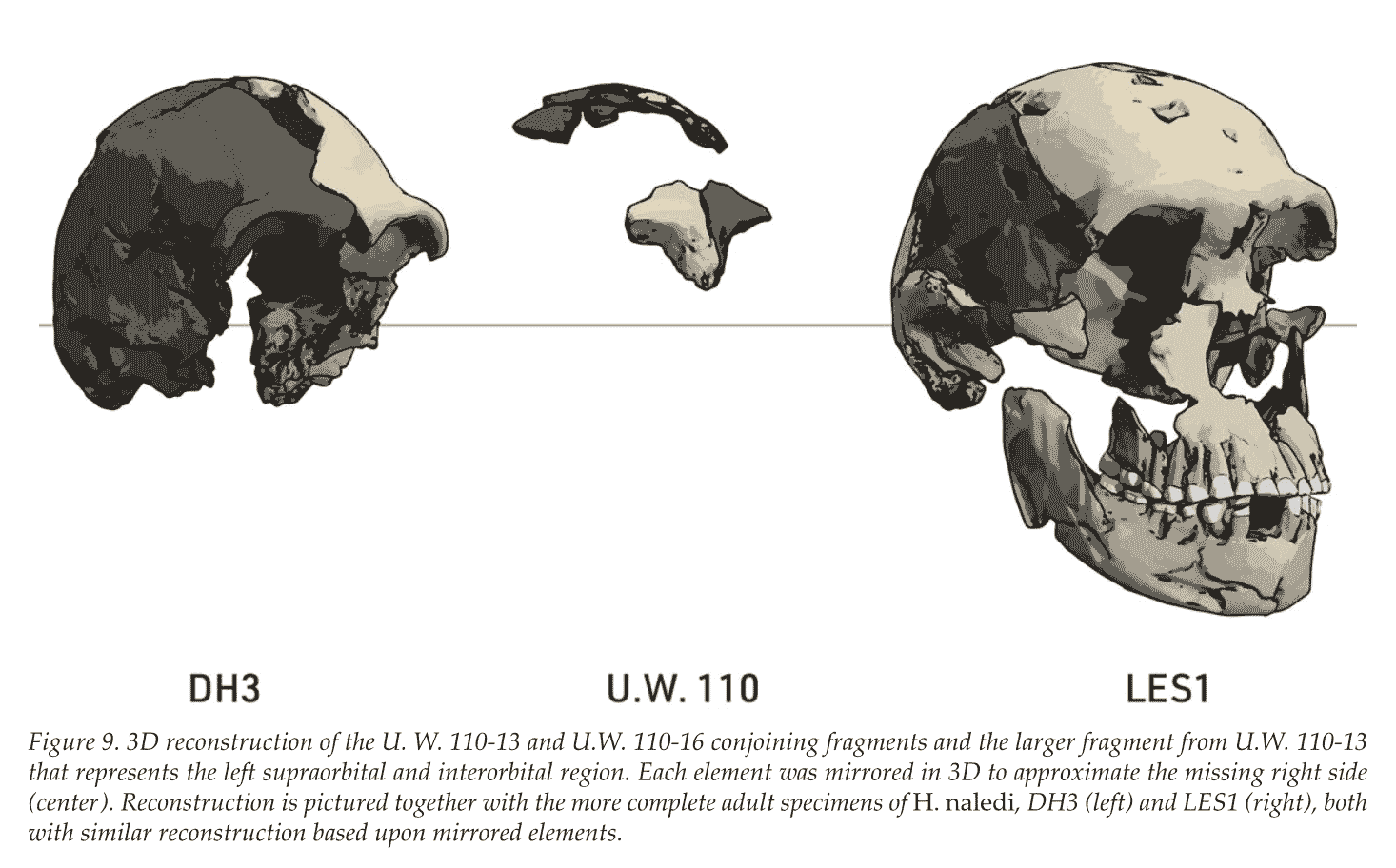Research highlight: A partial skull from Rising Star
Our team uncovered the tiny skull in a near-impossible crevice deep in the cave system.

Citation: Brophy, Juliet K., Marina C. Elliott, Darryl J. De Ruiter, Debra R. Bolter, Steven E. Churchill, Christopher S. Walker, John Hawks, and Lee R. Berger. Immature Hominin Craniodental Remains From a New Locality in the Rising Star Cave System, South Africa. PaleoAnthropology 2021.1: 1–14. https://doi.org/10.48738/2021.iss1.64
Citation: Marina C. Elliott, Tebogo V. Makhubela, Juliet K. Brophy, Steven E. Churchill, Becca Peixotto, Elen M. Feuerriegel, Hannah Morris, Rick Hunter, Steven Tucker, Dirk Van Rooyen, Maropeng Ramalepa, Mathabela Tsikoane, Ashley Kruger, Carl Spandler, Jan Kramers, Eric Roberts, Paul H.G.M. Dirks, John Hawks, and Lee R. Berger. Expanded Explorations of the Dinaledi Subsystem, Rising Star Cave System, South Africa. PaleoAnthropology. 2021.1:15–22. https://doi.org/10.48738/2021.iss1.68
In 2017, the exploration team in the Rising Star cave system were mapping a deep network of narrow fissures stemming off the Dinaledi Chamber when they found hominin remains. The location of the discovery is extraordinarily difficult for the team to reach. It is around 10 meters down a passage that is so narrow that the team members must squeeze through sideways, with parts that do not accommodate a helmet. The remains were on the surface of the floor, which is composed of sediment like other nearby parts of the cave. Marina Elliott recovered the material, and we designated the locality U.W. 110.
The remains from U.W. 110 included fragments of a cranium and teeth. Juliet Brophy led the description of the fossil material, and her expertise in deciduous teeth came into play. All of the skull fragments are consistent with the skull of a single child, and the teeth suggest a young age before permanent first molars erupted. Some work in the lab enabled me to refit a number of the cranial fragments near the top of the skull, and a large fragment of the brow and top of the orbit could be mirrored. Based on what was preserved, Lee Berger was able to build a reconstruction.

We do not know for sure how the child's skull arrived in this extreme location. It is very far from the Dinaledi Chamber fossil locality and overall more than 30 meters through the cave system from the Chute. Homo naledi must have been moving through this deep part of the cave. It is possible that more of the skull or other remains may be within the sediment at U.W. 110. At the moment, we do not have a way to excavate there.
In the accompanying paper led by Marina Elliott, we present the map of the areas around the Dinaledi Chamber and present a new naming system for these parts of the cave. This is a complicated series of small chambers and fissures. The team has identified skeletal material in several parts of this fissure system, and we are studying them now.


John Hawks Newsletter
Join the newsletter to receive the latest updates in your inbox.



